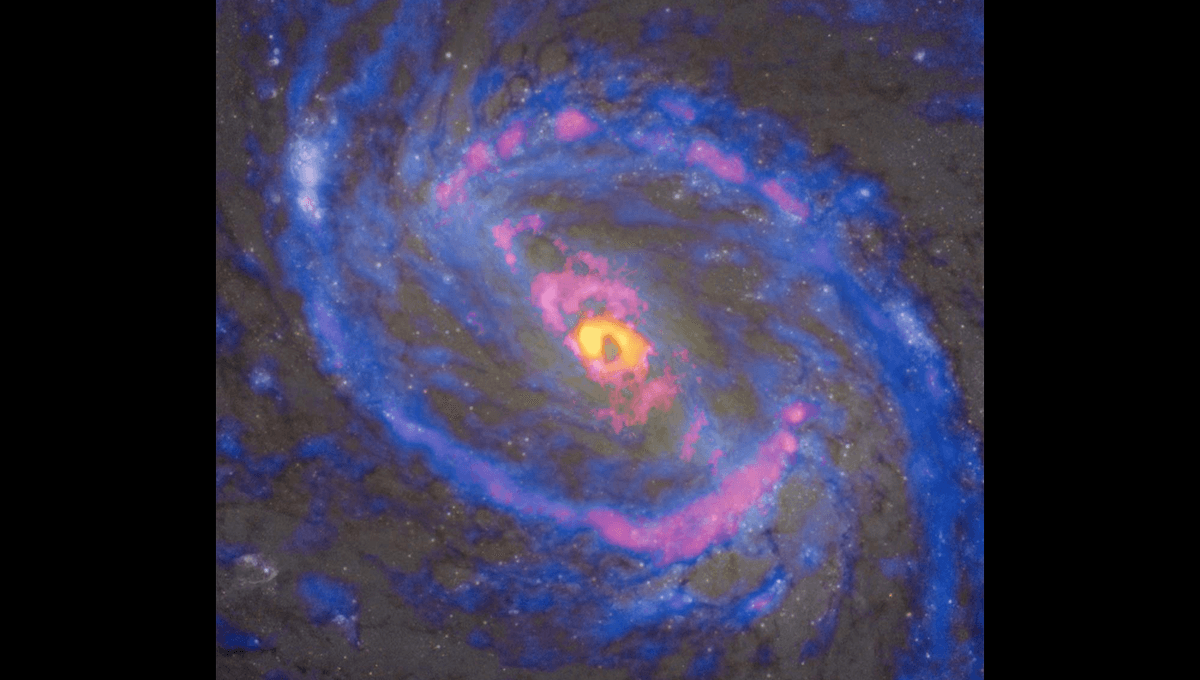
A study of the active supermassive black hole (SMBH) at the heart of a relatively nearby galaxy has confirmed the suspicion that these objects can change the distribution of molecules far from the galactic core. Although we don’t yet know what part the SMBH at the heart of our own galaxy played, the discovery raises the prospect some of the chemicals that allowed life to form on Earth are the products of activity over 26,000 light years away.
Most of the elements that compose the Earth and other planets are the products of exploding stars, be they supernovas or kilonovas. How those elements come together to form molecules, even before planets have formed, is something we’re just starting to understand.
The clouds of dust between us and the heart of the galaxy make it difficult to study the influence of our own SMBH, Sagittarius A*, so a team led by Dr Taku Nakajima of Nagoya University studied Messier 77 instead.
Messier 77 is 2,000 times further from us than Sagittarius A*, and our view of its immediate surroundings is also highly interrupted. However, it’s much easier to study the radiation from a little further out, seeking the tell-tale lines that indicate the presence and abundance of specific molecules. At 51.4 million light years away, Messier 77 is also one of the closest galaxies with an active SMBH, that is one that is feeding rapidly on stars, creating a bright accretion disk and powerful jets.
The team used the Atacama Large Millimeter/submillimeter Array) to map the distribution of 23 molecules throughout Messier 77. They found the powerful jets shooting out from Messier 77’s SMBH influence the distribution. Higher concentrations of HCN, CN, and SiO coincide with locations other studies have identified as hotspots for the jets. On the other hand, carbon monoxide is less common around the jets, indicating some process is causing it to break down.
The authors attribute the extra HCN and SiO to; “High-temperature environments resulting from strong shocks.”
The presence, or relative absence, of these molecules in the gas clouds from which stars form would influence their protoplanetary disks, and therefore the planets that form from them.
Currently, the molecules identified are concentrated in the circumnuclear disk (CND). Even if life gets started here, prospects for technological civilizations are almost nil: stars are packed so tightly that close approaches could cause cosmic bombardments, creating frequent mass extinctions. However, with time, molecules from the CND may disperse through the galaxy, reaching more peaceful locations such as our own.
Although only a small proportion of galaxies have active SMBHs at any one time, it is thought activity can turn on and off, so it is likely a galaxy such as our own has had an active center at times in its past. It’s already known that active SMBHs can have a big impact on their galaxies by temporarily quenching star formation, but this work suggests their role could be influential in subtler ways.
Messier 77 is also known as the Squid Galaxy and looks a lot like the Milky Way would if seen from a similar distance.
The papers are published open-access, both in the Astrophysical Journal (here and here)
Source Link: How Supermassive Black Holes Shape Their Galaxies’ Chemistry